Tarentola mauritanica
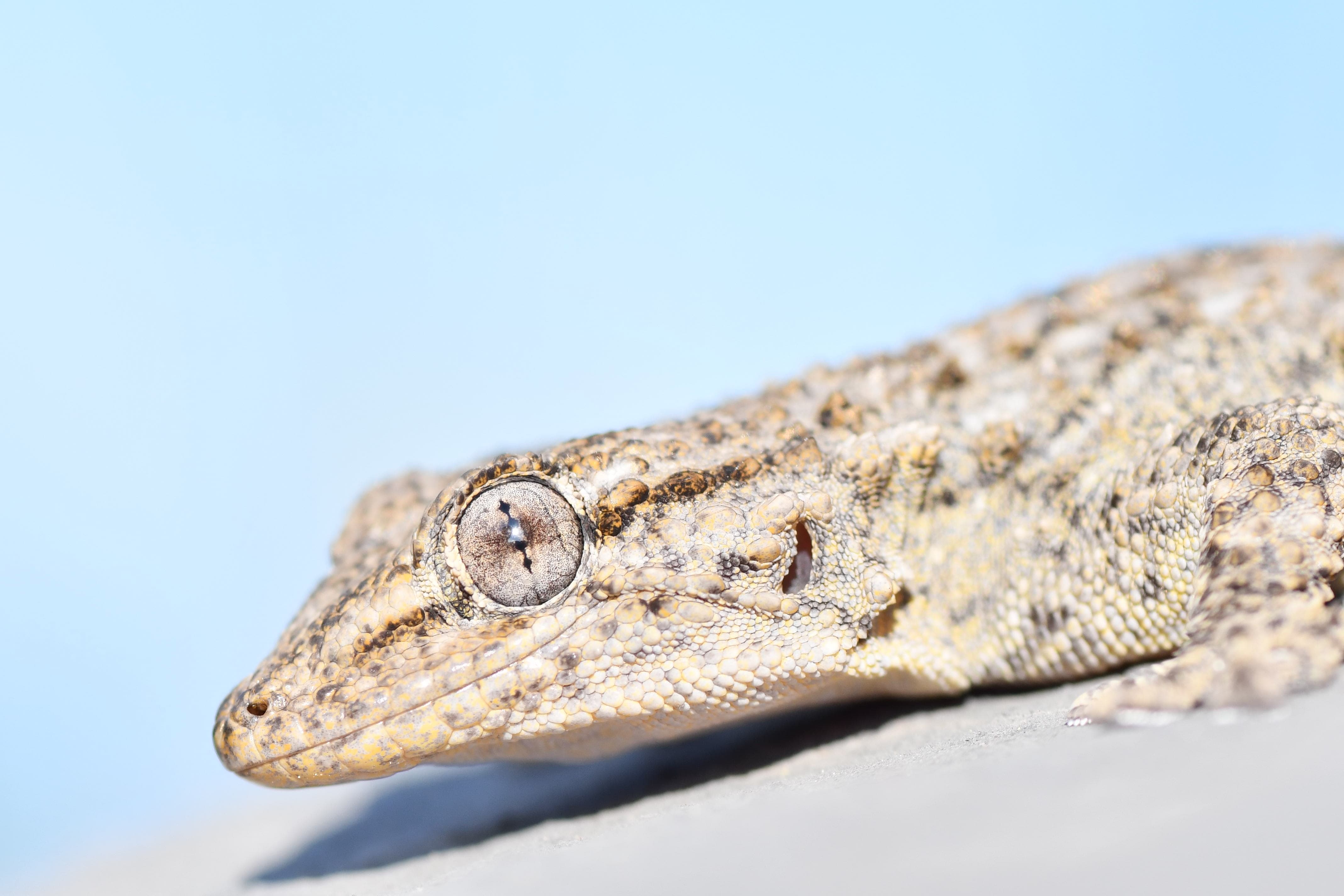

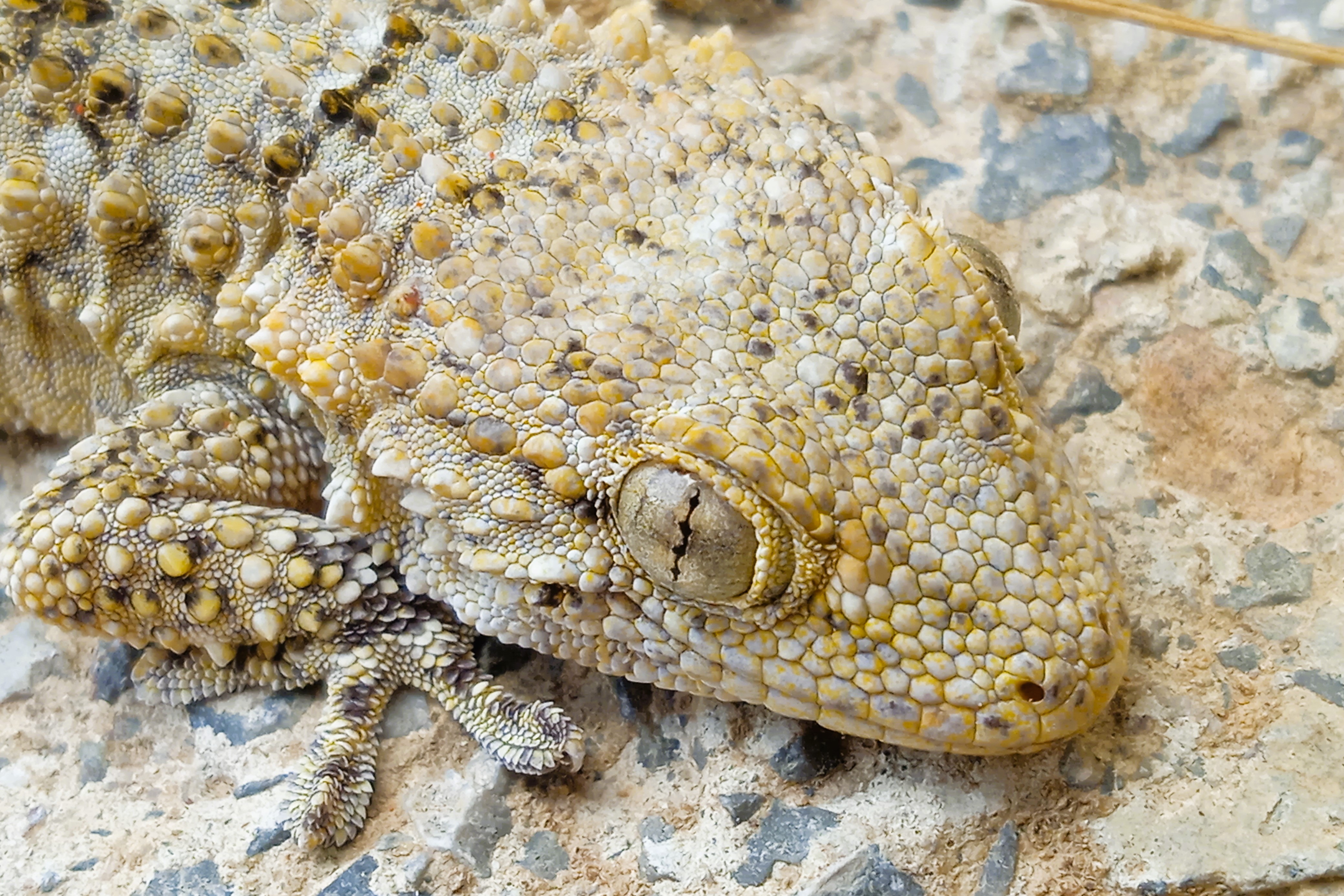
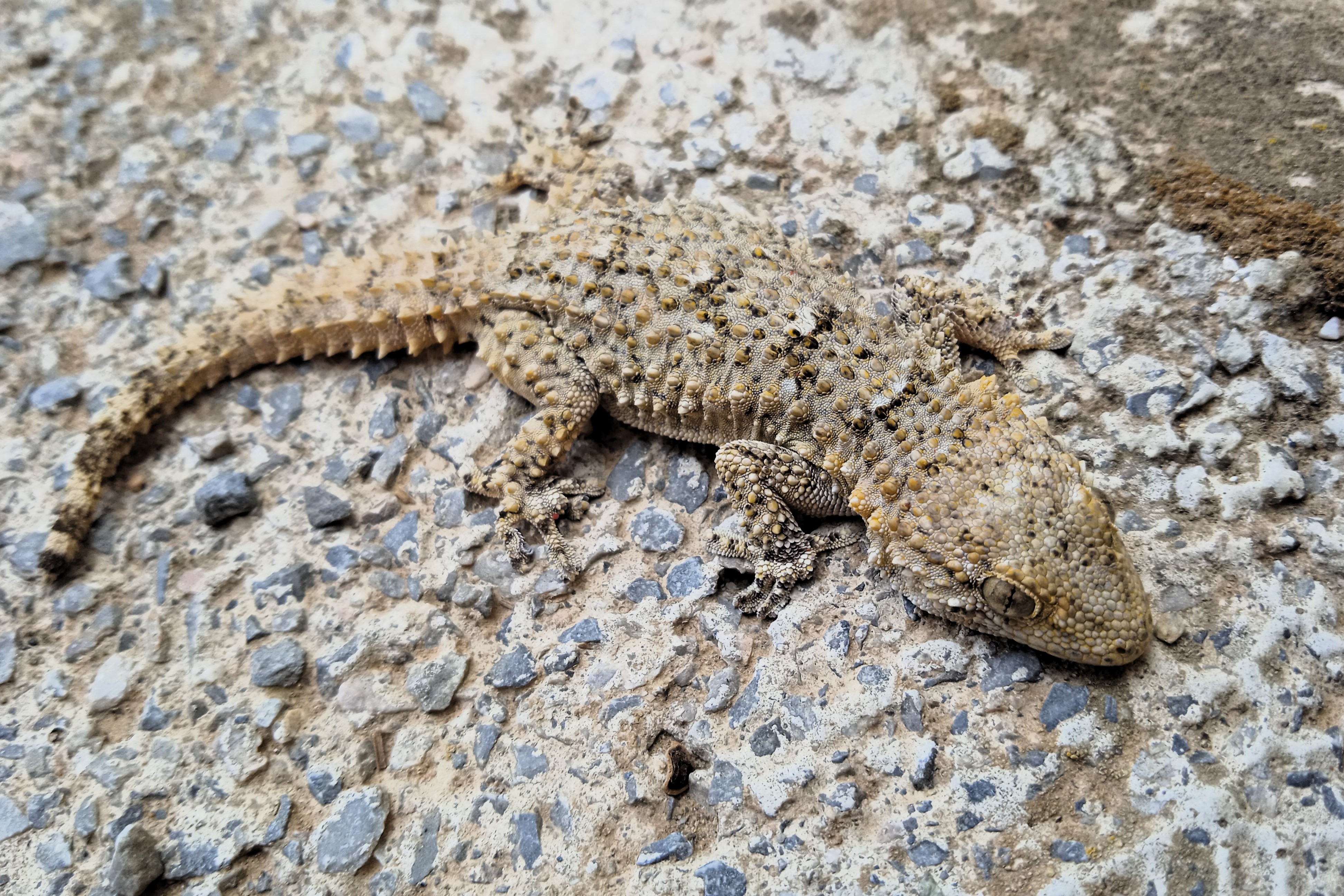
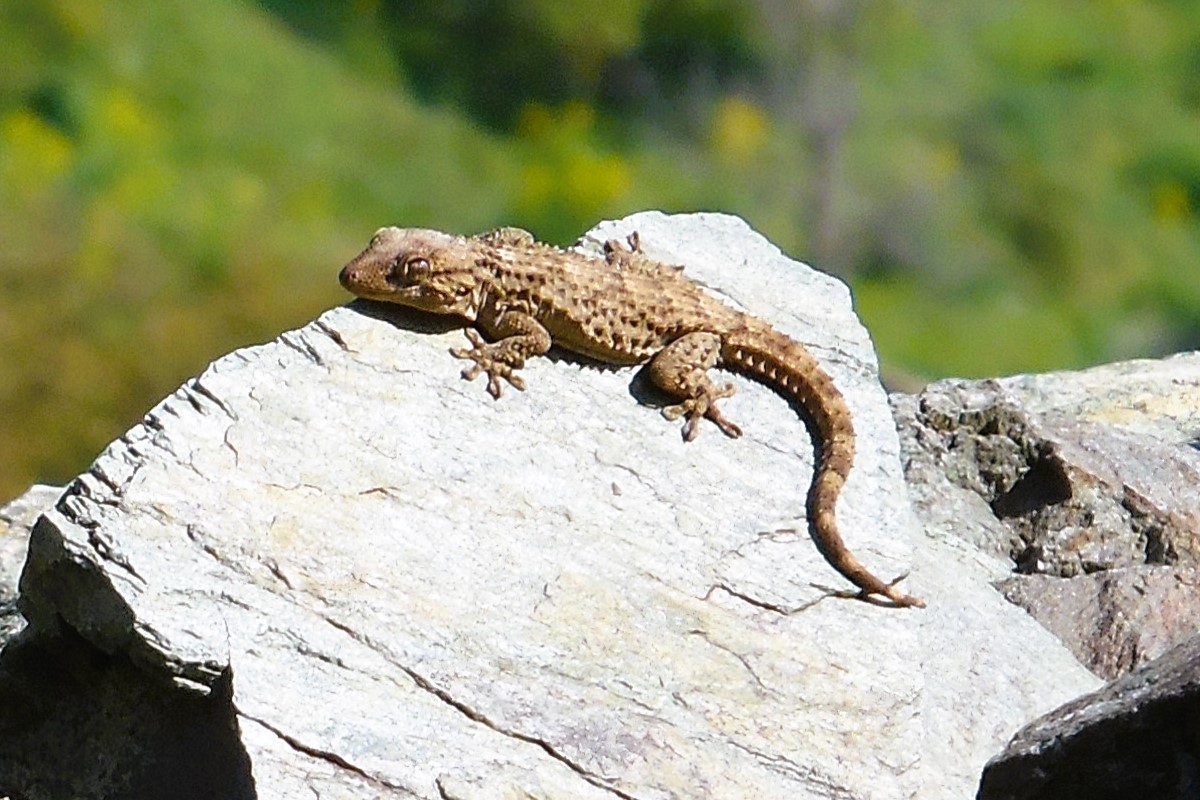
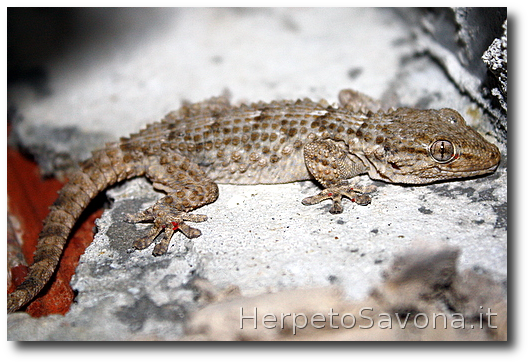
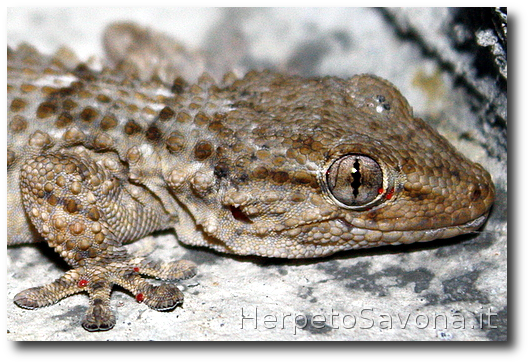
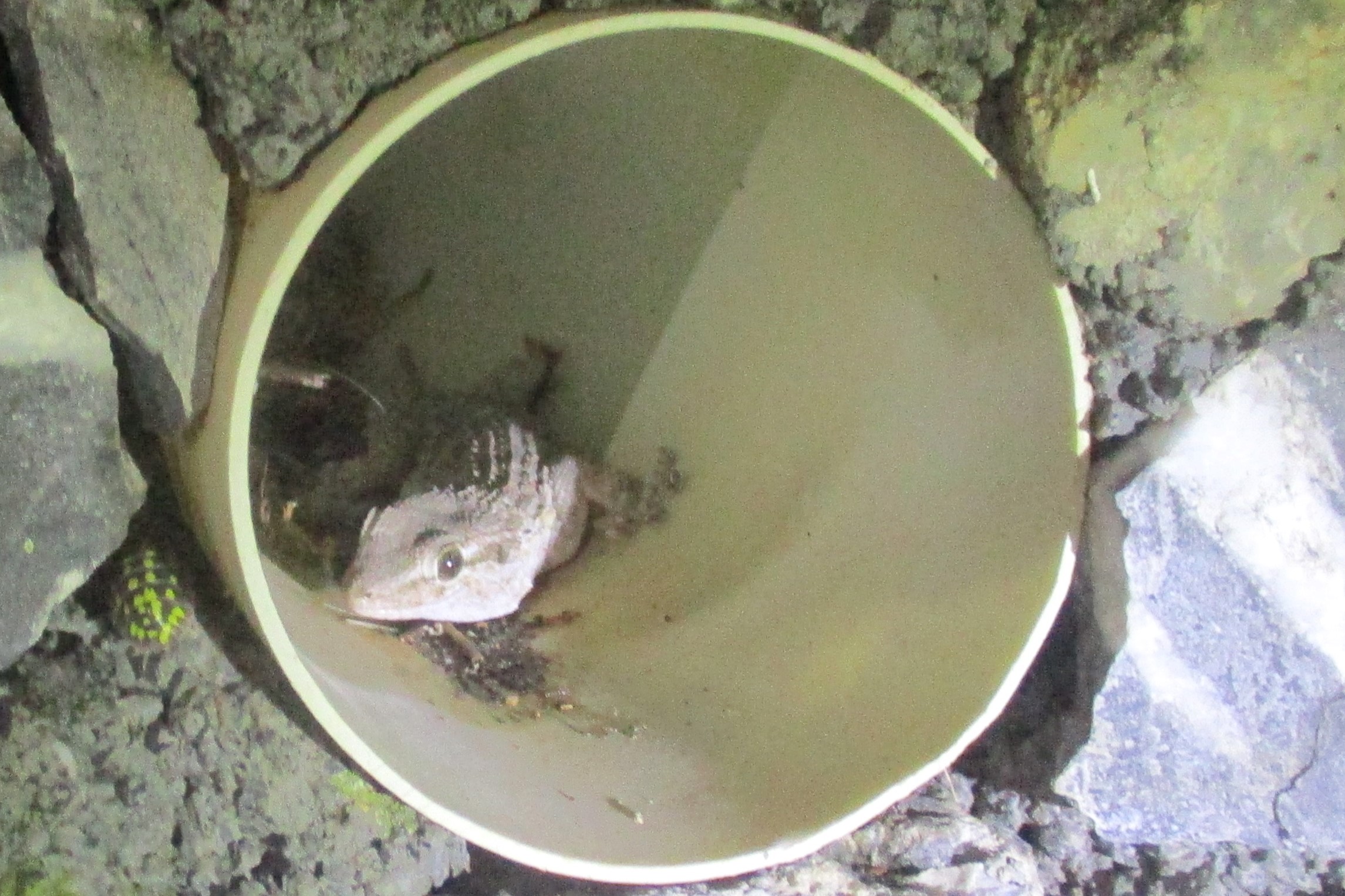
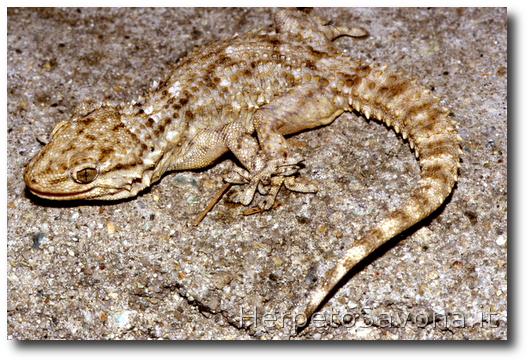
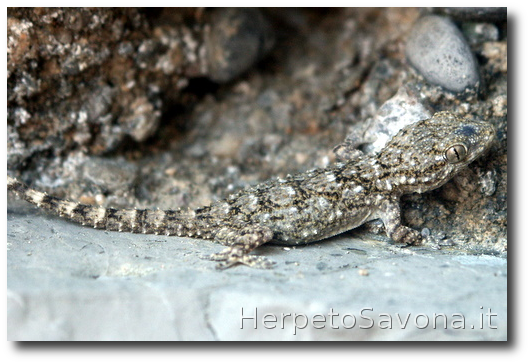
Reptilia → Squamata → Phyllodactylidae → Tarentola → Tarentola mauritanica
Ciattua, Scurpiùn, Scrupiùn, Scurpiùn orbu.
The Moorish Gecko is a small to medium-sized lizard, able to reach a total length of 6.3 in (16 cm) including the tail. The head appears large in proportion to the body, oval and flattened, with a pointed snout. The eyes are large, with a vertical pupil and an iris ranging from yellowish to brownish gray. The body is robust, stocky, and flattened, while the back and tail range in color from gray to brown, covered with prominent tubercles that give a rough and 'spiny' appearance. The toes are equipped with broad adhesive pads, formed by longitudinal lamellae on the undersides, which allow exceptional climbing ability on smooth surfaces; claws are present only on the third and fourth toes. Males are generally larger and stouter than females and are distinguished by two swellings at the base of the tail corresponding to copulatory organs. Juveniles can be recognized by the dark bands, particularly evident on the tail. During the breeding season, males emit a characteristic call, similar to a squeak, especially audible in the evening; a rougher sound can also be emitted in situations of danger.
This species is typical of Mediterranean coastal areas, with a range extending from Portugal and Spain to the Greek islands and North Africa. In Italy, the Moorish Gecko is widely distributed along coastal areas, but may also move inland, especially in regions with mild climates. In the province of Savona and western Liguria, it is documented from sea level up to about 2,300 ft (700 meters) in altitude; it is also common on the islands of Gallinara and Bergeggi. Its distribution appears limited to the Tyrrhenian side, without crossing the Apennine watershed.
The Moorish Gecko favors Mediterranean habitats characterized by rocks, stone heaps, dry stone walls, quarries, and woodpiles. It easily adapts to human environments, such as fields, gardens, and buildings, where it finds shelter in wall crevices or under tiles. Its presence is especially frequent in coastal towns, where it benefits from the favorable microclimate and abundance of prey.
Agile, quick, and very dexterous, the Moorish Gecko is an excellent climber, able to move easily on vertical surfaces and even ceilings. Activity is mainly crepuscular and nocturnal, but it can also be observed during the day on warmer days, especially in spring and autumn. The period of activity generally runs from February to November. As a territorial species, it actively defends its space through threatening postures and male-to-male fights. Breeding begins in April: after mating, the female lays one or two eggs, which hatch after about four months; up to three clutches a year may occur, at intervals of about two months. During the breeding season, males emit calls to attract females or drive off rivals, while weaker, rougher sounds are produced in stressful or threatening situations.
The Moorish Gecko is an opportunistic predator, feeding mainly on insects and other small invertebrates. Common prey include beetles, flies, wasps, isopods, moths, as well as small arachnids such as scorpions. It mainly uses ambush to hunt, making quick use of its sticky tongue to catch prey that comes within reach.
In the wild, the Moorish Gecko is prey for various animals, including terrestrial and arboreal snakes such as the Southern Smooth Snake ( Coronella girondica ), diurnal and nocturnal birds of prey, as well as mammals such as the European Hedgehog (Erinaceus europaeus), the Genet (Genetta genetta), and some mustelids. Predation is one of the main causes of mortality, but the species is also vulnerable to habitat fragmentation and pollution, although it is currently considered at low risk of extinction according to the most recent IUCN assessments.
The Moorish Gecko has the extraordinary ability of caudal autotomy: when threatened, it can voluntarily shed the tip of its tail thanks to specialized muscles, distracting the predator and facilitating escape. The tail eventually regrows, but the new section is uniformly colored and lacks the characteristic tubercles. In Liguria, the presence of a Moorish Gecko near a home is traditionally considered a good omen. The species is not poisonous and poses no danger to humans.